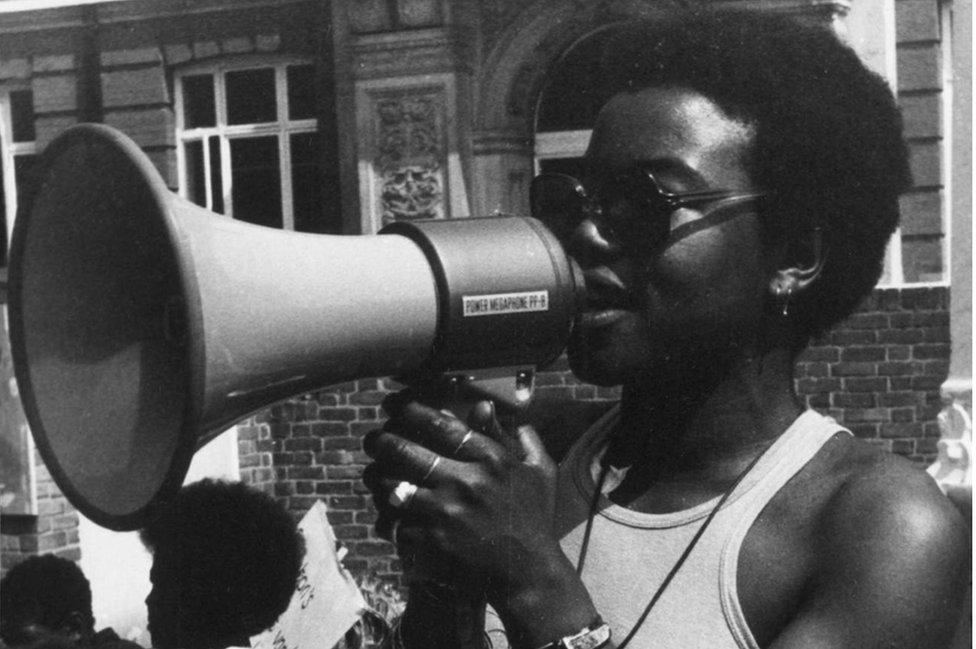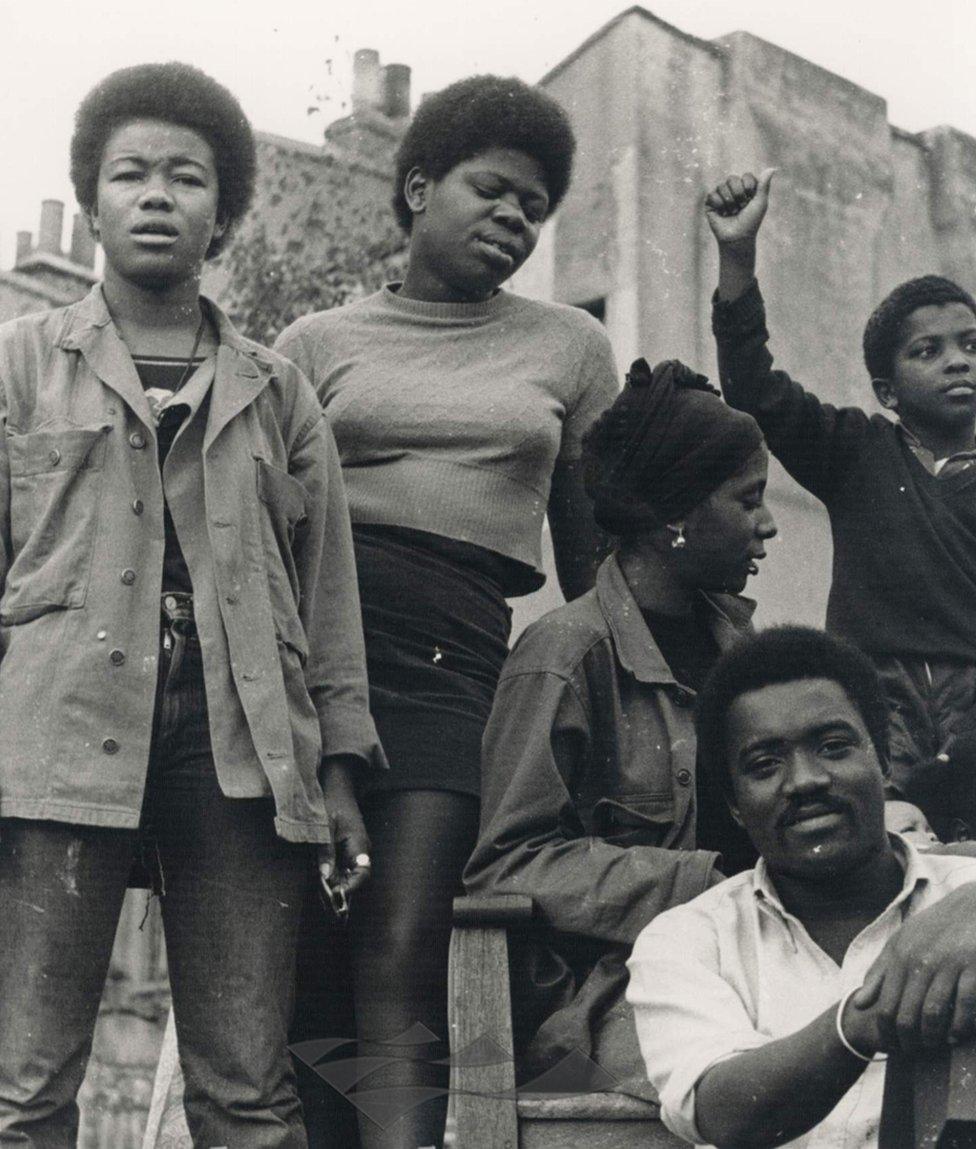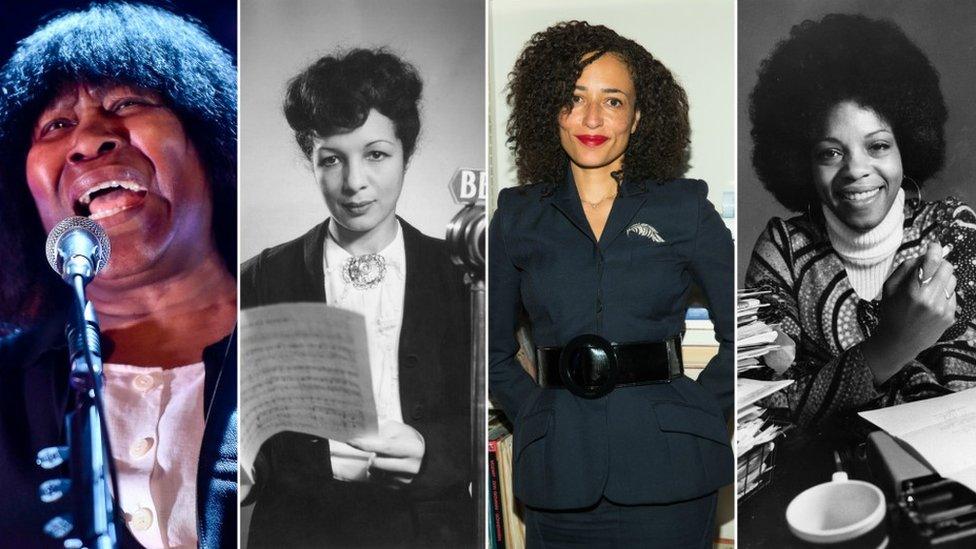Google Doodle: Who was Olive Morris?
- Published

Olive Morris is represented as a mural on the road where she established a squat
Activist Olive Morris has become the latest Google Doodle on what would have been her 68th birthday.
Morris, who died from cancer aged 27, campaigned for racial and gender equality, and squatters' rights.
She led protests and demonstrations, and helped to found the Brixton Black Women's Group in 1973, one of Britain's first networks for black women.
Google Doodles are the changes made to the company's logo to mark events, anniversaries and significant people.
The temporary design then features for a day on the homepage of the Google browser.
The latest image shows a mural of Morris's face on the side of a building on Railton Road in Lambeth, south London.
So who was the woman on the wall?

Olive Morris "couldn't stand by" in the face of injustice
Olive Morris was born in Jamaica in 1953 and moved to London with her family when she was nine.
When she was just 16, she became involved in an incident in which police tried to arrest a diplomat from Nigeria, who had parked his Mercedes on Atlantic Road in Brixton to buy some records.
Historian Angelina Osborne from the Fawcett Society, a charity that campaigns for gender equality and women's rights, said: "Police officers, thinking the diplomat had stolen the car began to, according to witnesses, arrest him and beat him.
"Olive came forward and physically tried to stop the police from attacking the diplomat, causing the police to turn on her, arrest her and assault her, kicking her in the chest.
"This young girl, barely 5ft 2in, took on racist police officers, without thinking about her own safety, because she couldn't stand by and allow the injustice of an African man being arrested for driving a nice car.
"This was one early incident of Olive's commitment to challenging oppression."
According to the Oxford Dictionary of National Biography, this altercation led to Morris being physically assaulted and racially abused by the police and arrested, along with six other people, fined £10, and given a three-month suspended jail sentence.

Olive Morris (left) with members of the American Black Panther Movement

Morris went to Lavender Hill Primary School and Dick Sheppard School in Tulse Hill and became involved in the British Black Panther Movement in the late 1960s.
Inspired by - but not affiliated with - the American Black Panther Party, the British Black Panthers had a mission to promote self-determination and challenge the British state.
You may also be interested in:
She set up the 121 Railton Road squat in 1973 which served as a local activism hub until 1999, when squatters lost a court case against Lambeth Council. She co-founded the Brixton Black Women's Group in 1974.
During her student years at Manchester University (1975-78), Morris also became involved in the community struggles in Moss Side, contributing to the formation of the Black Women's Mutual Aid and the Manchester Black Women's Co-op.
She then worked at the Brixton Law Centre.
She died aged 27 and is buried in Streatham Vale Cemetery.
In 2009 she was chosen by popular vote as one of the historical figures to feature on a local currency, the Brixton pound. In 2011 the Olive Morris memorial award was launched to give bursaries to young black women.
Matt Cruickshank, who designed the Google Doodle, said: "Olive's activism took place nearly 50 years ago. My hope is that real, positive change will occur in our current context, and that Olive is remembered as a vital influence in this ongoing fight for equality and justice for all."
- Published26 September 2023
